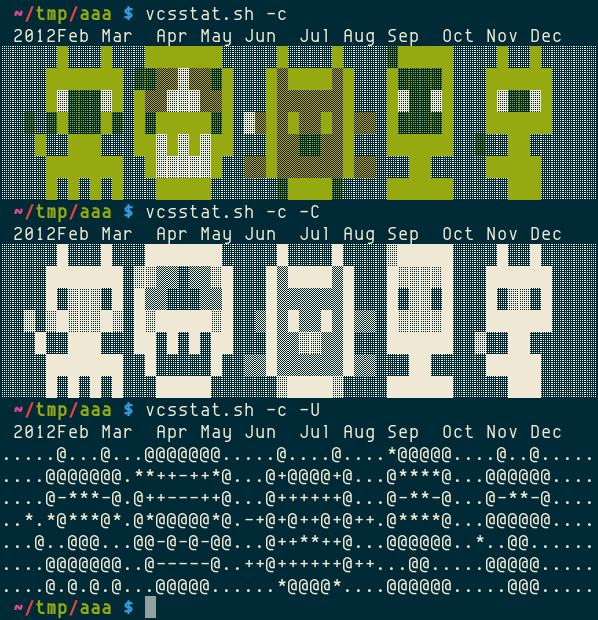Note
a new blog post and new version of this script have been published, it adds new option for Commit calendar like Contributions calendar in a GitHub profile page. (2013-02-03T17:30:40Z)
Here is the quick stuff to understand what this is:
$ vcsstat.sh -h
vcsstat.sh [''|AUTHOR_NAME [''|HG_DATESPEC [''|GIT_SINCE [''|GIT_UNTIL]]]]
Every argument is basically optional, however you need to use '' to indicate
that you are not specifying it.
HG_DATESPEC Examples
====================
"2011-08"
"2011-01 to 2011-03" # Jan. to Mar. in 2011
">2011-05" # Since May.
"-3" # Last three days
See hg manpage for DATE FORMATS section.
GIT_SINCE and GIT_UNTIL Examples
================================
"2011-01-23"
"yesterday"
"2 weeks ago"
See..., uhm I have no idea where to look at. gitrevisions manpage for
date specification, perhaps?
You can grab the script here.
The script will list all directories and look for VCSes special hidden directory. Currently (and probably only will be), it only supports Git and Mercurial (Hg).
As you can see, there are two types datespec used. Git and Hg have some differences, I need to separate into two.
Its MITd and hosted on GitHub, feel free to request features or even better, open pull requests! (Patch might be more suitable, or you need to publicly fork my dotfiles on GitHub).
I wrote this because I believed I had caffeine overdose (xD), but clearly, from the screenshot above, I didnt have.
Gotta have my cup, gotta have caffeine!
Shoot! Its already Saturday.
(I know, I know its old but still have too much caffeine in my brain, thats all I can come up with. ;)
Edit: Damn forgot this blogs timezone is set to Pacific time Its still FRIDAY, YEAH!
*** WARNING: This blog owner is BUI (Blogging Under Influence)! ***
